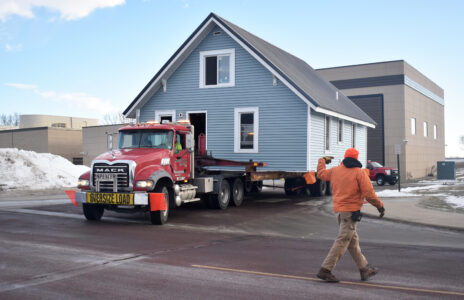Outages handled by city as storms continue to hit
FAIRMONT – Some residents in Fairmont experienced power outages Saturday not caused by, but in tandem with, storms in the area.
Fairmont Electrical Superintendent Miles Heide said the town’s electric load is around 14 megawatts on average. He said overall, the city’s grid is in good shape for making improvements.
“Especially in the next few years, for upgrading all of our substations,” Heide said. “We’re adding a second transformer to our 10th Street sub. We are building a new substation where the old power plant is right now. We started work last month. That one’s being rebuilt, and then on the West end is covering another substation.”
Heide said substations are the hearts of the grid, and the philosophy is to start work from the heart and then extend out to the arteries and the veins.
Overall, Heide said the power grid has held up pretty well this summer.
“We’ve had a couple of outages here and there,” he said. “Not any more than what other utilities have experienced. We have a pretty good, experienced crew. We do a lot of maintenance, being preventative. Preventative maintenance is always better than reactive maintenance.”
A couple of those outages happened over the weekend. On Saturday, a turkey vulture got into the transmission lines, causing an outage for around an hour. Monday featured a tree branch that fell on power lines.
Heide said this second outage occurred on a southwest electricity feeder. This feeder receives power from the transmission lines that were affected Saturday, so some people were likely affected twice. After work was done to trim more tree branches around the electricity feeder, the power was restored after 30 to 45 minutes.
While they try to cover the poles and sensitive areas of electricity, Heide said animals like squirrels and birds are the most common cause of power outages. He said the city uses mitigating solutions to keep animals from getting hurt.
“It’s usually a plastic cover-up that you can put on top of a bushing on a transformer,” Heide said. “It adds that little piece where an animal gets in there. They touch that plastic, which insulates them from phase to ground contact.”
On the other hand, storms have been relatively manageable in terms of potentially causing power outages.
“Seems like everything that comes up to Fairmont on the west side of us either splits and goes south or splits and goes north,” Heide said. “We’ve been right in the middle of that little V. Knock on wood, we’ve been pretty good about avoiding storms.”
In case of power outages, Heide said people should keep their refrigerators and freezers closed to retain the cold and keep food from spoiling for as long as possible, and have battery-powered flashlights.
If the power has been checked in the home and cannot be restored, Heide said to call the 24-hour emergency line at 507-235-6789. Even if you believe the electric department already knows about the outage, Heide said there’s always the chance they don’t, especially if it is in a rural area.
National Weather Service Meteorologist for South-Central MN Joe Strus said it’s getting to the time of year where the weather is driven largely by the heating of the day.
“With that, you get the humidity and you get showers and thunderstorms to develop,” he said. “The hot summer day where stuff bubbles up, and that causes storms with the convergence of drifts from the Gulf and Pacific to the Midwest.”
He said that starting Tuesday night and running into today and Thursday, multiple showers will run through the upper midwest.
“Whether that will be northern or southern Minnesota depends on where the storms track over the next 36 to 48 hours, but southern Minnesota is in the focus area. Each storm brings danger of wind gusts, potential hail. Potentially 2 to 3 inches, but that would be localized depending on landing location.”
Some areas of the Minnesota River and its offshoots are in the action stage, with Morton’s portion in minor flood warning. For those around water or low-lying areas, Strus offered a few tips.
“If you live near a river and you get a lot of rain, stay away from the banks,” he said. “You don’t know what it’s carrying with it. Turn around, don’t drown. Don’t try to drive through any amounts of water on roadways.”


